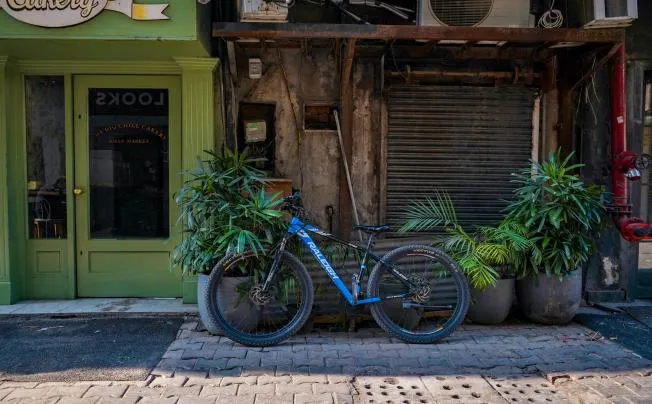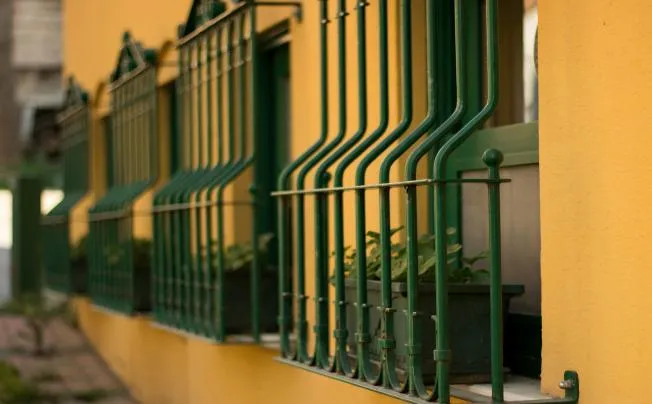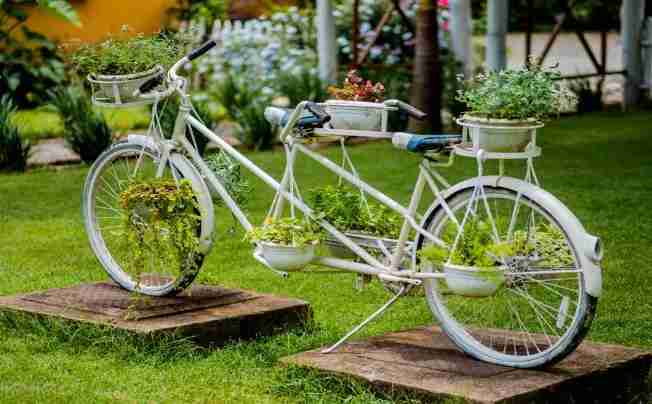Should I Line A Galvanized Planter?
When you stroll through the gardening world, galvanized flower pots are definitely a unique landscape.
Benefits of Lining Galvanized Flower Pots
(I) Make flower pots last longer
Even while galvanised flower pots themselves are somewhat resistant to corrosion, the zinc coating of the pots is continuously eroded in some harsh situations, including coastal places, by the combination of the sea breeze's salt and humidity. Alternatively, during the northern winter, the chemical components of the snow removal agent will damage the flower pots by splashing onto them with the melting snow.
To further isolate oxygen and moisture, line the flower pot. According to certain tests conducted on galvanised flower pots that have been subjected to severe conditions for a lengthy period of time, the lined flower pots' zinc covering corrodes at a pace that is at least 30% slower than that of the unlined ones, extending their service life by two to three years.
(II) Preserving plant development
Soil moisture can be controlled by the liner. In the sweltering weather, water rapidly evaporates. The lining can keep the soil moist, slow down the soil's quick water loss, and keep plants from withering from a shortage of water. It can stop too much water from building up in the soil during the rainy season and stop the roots of plants from being soggy for an extended period of time and developing rot.
Plant growth may suffer if metals come into direct touch with plant roots. Plant roots may absorb metal ions, which would interfere with the plants' regular physiological metabolism. By separating plant roots from metals, the liner can provide a secure and safe growing environment for plants, enabling them to take root and develop worry-free.

How to choose the right lining material?
(I) Overview of typical liner materials
The most popular liner is made of plastic. It can successfully keep moisture away from the flower pot's metal component and performs exceptionally well in terms of waterproofing. Additionally, plastic lining is readily available and reasonably priced at the majority of gardening supply stores. It is both cost-effective and useful. Additionally, it comes in a range of thicknesses. While smaller plastic linings are lighter and less costly, thicker ones are more resilient and last longer.
Fibres make up non-woven linings, which have good air permeability. They can improve soil air circulation, give plant roots enough oxygen, and encourage plant respiration. For plants like succulents and orchids that need a lot of soil air permeability, this is ideal. Additionally, it has a certain amount of water permeability, which prevents water buildup in the soil by allowing excess water to slowly drain away. Additionally, non-woven textiles are pliable, simple to cut and shape, and suitable for a variety of flower pot shapes.
Strong and difficult to break, geotextiles can hold up well while being used. In addition to trapping soil particles and halting soil loss, geotextile provides good percolation, which lets water escape. It can be used for a long time in a humid atmosphere without corroding because of its exceptional corrosion resistance.
(II) Precise selection based on requirements
The actual needs must be taken into consideration while choosing lining materials. Air permeability can be taken into consideration when using galvanised flower pots in a dry indoor setting. Non-woven linings can guarantee that the soil has adequate air permeability, enabling plants to flourish indoors because the air is generally dry and water evaporates slowly.
Priority should be given to waterproofness and durability if the flower pots are going to be outside and exposed to a variety of challenging conditions, including wind, rain, and sunlight. Plastic liner is a preferable option in this situation. Its toughness allows it to endure extended outdoor use, and its waterproof function efficiently fends off moisture intrusion and keeps the flower pots from rusting.
Geotextile liner is a great option if the plants being planted are ones that have high needs for soil air permeability and drainage, such cacti and other desert plants. It guarantees efficient drainage and strong air permeability, which creates ideal growing conditions for these unique plants.

Practical steps for adding lining
1. It's crucial to prepare
To guarantee that the cutting edges are clean and accurate, you must first prepare a pair of sharp scissors. To make scissors more convenient to use, consider both the handle's comfort and sharpness while selecting them.
The lining material comes next. According to the previous option, if you choose to use a plastic lining, make sure it is moderately thick, robust enough to endure daily pulling and friction, and not too thick to compromise cost and ventilation. Verify the quality of any non-woven fabric or geotextile to steer clear of materials with flaws or damage that would reduce their usefulness.
Additionally, measuring instruments are essential. For the measured size to be more accurate and to provide trustworthy information for further cutting, the tape measure should be precise, ideally to millimetres. Additionally, get some supplies ready, such tape or twine, to secure the lining. The string should be sturdy enough to support the weight of the soil and lining, and the tape should be adhesive and difficult to remove.
2. Certain actions are required
To obtain an exact diameter value, measure the inside diameter of the flower pot using a tape measure from one edge to the other. Make sure the measuring point is horizontal. Take measurements of the flower pot's depth and the vertical distance between the pot's mouth and bottom, then note the results.
Cut the lining material to the exact size that was measured. To guarantee that the plastic lining can fully cover the inner wall of the flower pot and may be adjusted during installation, add some margins to the estimated size, usually 2-3 cm on each side. Carefully cut with scissors along the indicated line, taking care not to cut unevenly, and maintain clean edges. Because the material is rather soft, you can use a sharp utility knife to cut non-woven fabrics and geotextiles, and you can use a ruler to create a straighter edge.
Starting from the bottom, carefully insert the cut lining into the flower pot to install the lining. Then, slowly unfold the lining to conform to the flower pot's contour. When it comes to plastic liners, it's important to smooth them out and prevent wrinkles because they can reduce the liner's waterproofing properties and let dirt to collect in them, which can hinder plant growth. If there is extra, tape it in place and fold it inward along the flowerpot's edge. To guarantee rigidity, the tape should be uniformly affixed to the flowerpot's edge and the liner.
In order to keep a non-woven or geotextile liner from slipping, it can be securely secured with a string at the flowerpot's mouth. To prevent harming the liner or detracting from the flowerpot's beauty, the thread should be moderately long and not tied too tightly. To give the plants a healthy growing environment, continuously adjust the liner's position during installation to make sure it covers the flowerpot's inner wall fully and that the bottom is flat with no hanging or protruding pieces.

Selected Blogs
-
What customization services are available for metalworking customization?
2024-12-12
-
What Is The Difference Between A Plant Container And A Raised Bed?
2024-04-23
-
Garden Screening & Fence Panels
2024-04-23
-
Gardening pot selection tips
2024-04-17
-
The function and collocation of horticultural fire pot
2024-04-17


